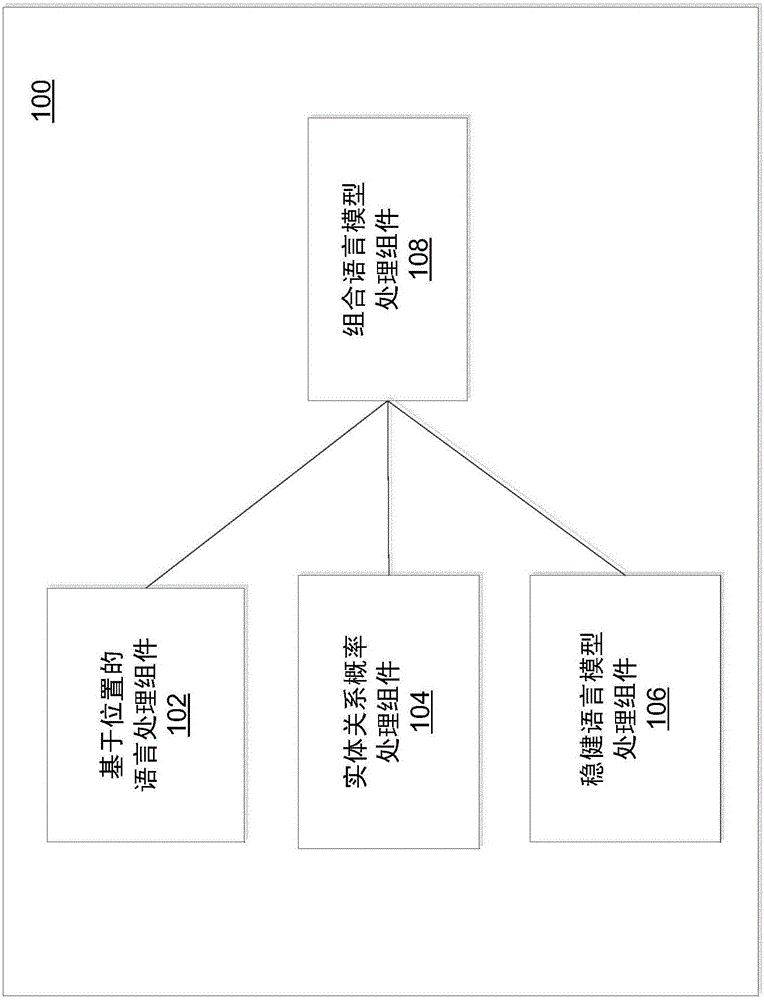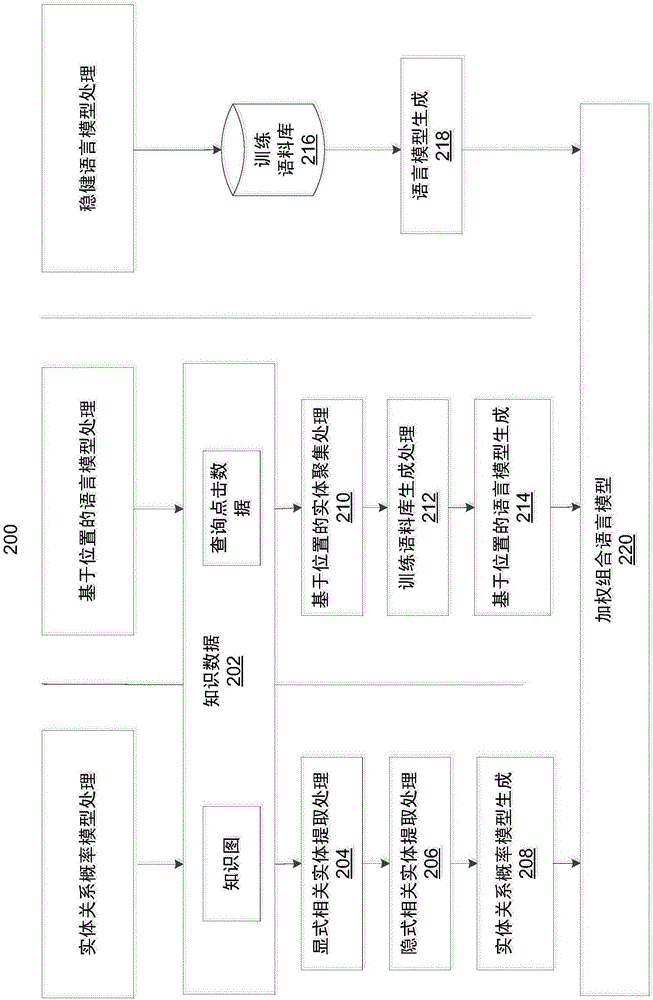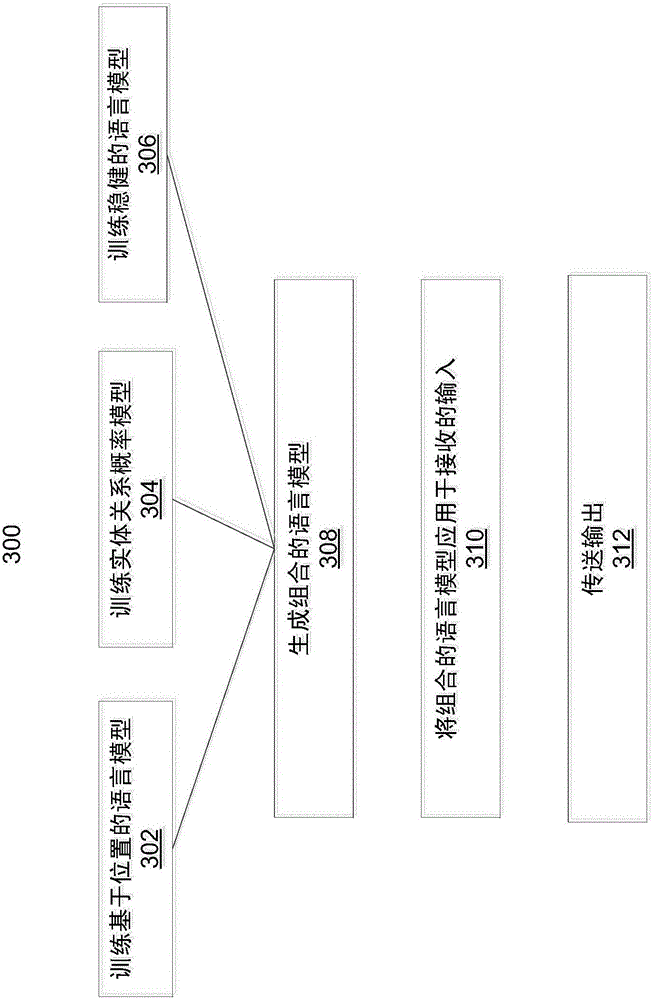Language modeling for voice recognition by use of knowledge graph
A technology of knowledge graph and language model, applied in speech recognition, speech analysis, natural language data processing, etc., can solve difficult problems
- Summary
- Abstract
- Description
- Claims
- Application Information
AI Technical Summary
Problems solved by technology
Method used
Image
Examples
Embodiment Construction
[0014] Examples of the present disclosure describe utilizing knowledge graphs to enhance statistical language modeling for online speech recognition systems / services to more correctly recognize named entities. A speech recognition system / service applies at least two models to evaluate input, namely 1) an acoustic model, and 2) a language model. An input is any data provided to and processed by a processing device. While the examples may describe input as relating to speech recognition processing, those skilled in the art will recognize that the examples described herein are applicable to any type of input, including but not limited to: speech / sound input, text input, gesture input , and examples such as handwriting input. An acoustic model is used to evaluate the pronunciation of utterances. Voice modeling processing is used to model received utterances. The output of the acoustic model is a lattice for each utterance. Lattice is an intermediate probability model in the fo...
PUM
 Login to View More
Login to View More Abstract
Description
Claims
Application Information
 Login to View More
Login to View More - R&D
- Intellectual Property
- Life Sciences
- Materials
- Tech Scout
- Unparalleled Data Quality
- Higher Quality Content
- 60% Fewer Hallucinations
Browse by: Latest US Patents, China's latest patents, Technical Efficacy Thesaurus, Application Domain, Technology Topic, Popular Technical Reports.
© 2025 PatSnap. All rights reserved.Legal|Privacy policy|Modern Slavery Act Transparency Statement|Sitemap|About US| Contact US: help@patsnap.com



